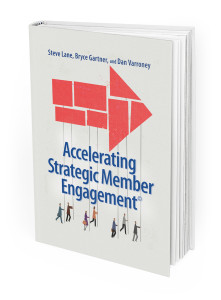4 Strategic Steps Associations Can Use to Leverage LinkedIn
Although Job Seekers and Headhunters scour LinkedIn, it can a be a potent platform for Associations. LinkedIn expert Donna Serdula, believes that Associations can leverage this powerful resource to “grow membership and engage members too.” Serdula is Author of the popular book, LinkedIn Makeover: Professional Secrets to a POWERFUL LinkedIn Profile; and a Contributor on the Potomac Core Consulting Blog.
1. Associations Harvesting Prospects
Twitter and Facebook surpass LinkedIn in sheer volume. However, the business demographic makes LinkedIn a powerful destination to recruit members, says Serdula. Associations should view LinkedIn as a key element in their recruitment strategies.
2. Key Words Mean Everything
Serdula insists that Associations should have an “optimized” company page. Why? Associations populating their pages with key words that drive prospective member traffic to their page are game changers.
3. Associations Engage Members
Despite improvement in the overall economy, travel budgets are still not at pre recession levels. Associations are leveraging Social Media more often to engage members. Recently for example, Jeffrey D. Morgan, President and CEO reported that Social Media is a key element of NIRI’s (National Investor Relations Institute) member engagement strategy. Many platforms facilitate member engagement, and LinkedIn is no exception.
4. Association Member Only Participation
LinkedIn makes it possible for Association members to engage in policy discussions. Policy committee leaders need not worry about non members or other outside parties listening in. Moderators can restrict participation to members only from the get go.
4 Strategic Steps Associations Can Use to Leverage LinkedIn
Author Alvin Toffler, in the introduction of “Future Shock,” wrote “Change is the process by which the future invades our lives.” With its newly announced search capacity, LinkedIn is that much more effective in helping Associations grow and engage their members.
Free eBook “Accelerating Strategic Member Engagement” is available for all Association Executives at www.potomaccore.com,www.icimo.com, and www.verticalleapconsulting.com.






